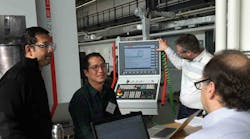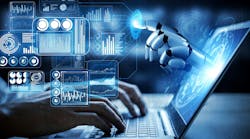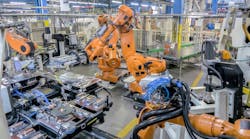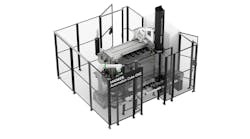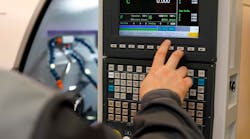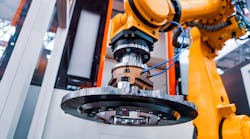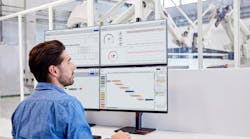Updates comprise the daily task list of every manufacturing operation: updating CAM programs, updating work orders and production records, and so on. The best example is CNC machine calibration to ensure all the components and functions are operating at anticipated geometrical and dynamic settings.
Calibrating (and recalibrating) CNC machines is demanding of machine shops’ resources (time, as well as brainpower) but without establishing a performance baseline, the most advanced machining systems cannot meet their potential. Often, a machine shop must engage specialty technicians to calibrate its machines.
Now there is an update for all this — emerging technology to optimize the time and brainpower needed to calibrate CNC machines. Artificial Intelligence (AI) is the concept (and method) of applying computing to execute tasks that require distinctly human intelligence, like visual perception, speech recognition, decision-making, and language interpretation. The practical potential of this for a machining operation are easy to compute.
Bonsai, a California-based AI developer, teamed with Siemens to apply deploying Artificial Intelligence to calibrate a CNC machine. While Siemens develops automation systems and drives that define computer numerical control systems, its technicians adopted the Bonsai AI platform to instruct a machine to complete more integral, complex tasks. They “trained” an AI model to auto-calibrate a CNC machine, in what Bonsai CEO Mark Hammond said is the first-ever application of "deep-reinforcement learning" to auto-calibrate real-world CNC machines.
"Reinforcement learning is a kind of AI or machine learning where the AI learns to adapt and operate from a real or simulated environment,” Hammond explained. "AI trained through deep reinforcement learning can deal with ambiguity better than AI trained through other techniques. Deep reinforcement learning is the use of a specific kind of algorithm — deep neural networks — for reinforcement learning."
The technique for ‘machine teaching’ involves a simple scripting language to define ‘lessons’ and ‘rewards’, which the Siemens experts defined for each individual task. Bonsai’s AI engine supports multiple deep reinforcement learning algorithms, defines the logic that a machine will use to choose the most appropriate algorithms, and directs the training process.
The Siemens team used the Bonsai AI engine to build a predictive model (a “Basic Recurrent Artificial Intelligence Network,” or BRAIN) to calibrate a CNC machine: a five-axis Hermle C42 mill/turn machine, a suitable example of the types of multi-tasking machines that shops adopt to carry out high-volume orders for precision parts. “The calibration (on such a machine) increases in complexity with additional axis,” Hammond noted, “but the capacity for AI to provide value in the calibration process is not limited by machining process complexity."
In their proof-of-concept effort, the Siemens experts were able to apply the AI without having to gain their own deep understanding of machine learning. More notable, their AI model was able to auto-calibrate the CNC machine more than 30 times faster than a human operator could accomplish.
After six months of proof-of-concept, including training the algorithms in a simulation environment, the BRAINs’ ability to calibrate a Siemens CNC-controlled machine was established.
"The opportunity for an innovation like this is much bigger than just CNC machine,” advised Bonsai CEO Mark Hammond, noting the AI platform’s flexibility for users to develop and deploy machine-learning models that incorporate system-specific subject matter expertise and deployment requirements.
"There are many different potential applications and deployment models for intelligent machine calibration,” he concluded. “Within the manufacturing sector alone there is a vast range of devices and systems that require initial and ongoing calibration. Think of engines, wind turbines, wafer manufacturing lines, and construction equipment.”
